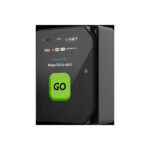Written by Mary Kaplan, Senior Product Manager at LumApps
When it was first introduced in the late 90s, the intranet paved the way for organisations to deliver top-down communications with staff. Acting as a website and knowledge source for internal employees only, it was a way to connect local staff by bringing together tools, processes, tasks, and people. But the market and landscape has evolved and barely resembles what it looked like 30 years ago.
Today the modern intranet has evolved into the digital employee experience or digital workplace: one that delivers a dynamic environment that champions personalised communication, drives engagement initiatives and offers an online collaborative space for co-workers to build relationships.
In the current environment where trends such as the great resignation has impacted businesses across all industries, employee experience is critical for retaining and maintaining talent.
Recruitment is expensive: costing as much as 40% of base salary. While there are lots of initiatives that can help improve employee satisfaction, such as flexible working, well-being initiatives, and even enhanced benefits, none are able to directly influence engagement.
Of course, it’s not just about retention. According to Gallup, staff who are engaged deliver 21% greater profitability than their unengaged counterparts. Organisations who are not looking at employee experience as a core objective run the risk of losing people and profits to those who are. So, can employee experience platforms support the needs of disconnected global and local organisations?
The digital employee experience hub
As the internet evolved from connecting people, to engaging them, so has the intranet. In a move from top-down communication, employee experience platforms delivers communications and content from a human, personal perspective, allowing users to create and share content as a way to increase interaction and engagement. Think of it as an internal social media platform.
As employee collaboration has evolved, the volume of workplace communication has also increased 10-fold – more emails, more chats and more notifications leading to information overload. A centralised system that can integrate different communication forms has become critical to helping organisations and the people who work for them manage their engagements. This is where the digital workplace comes in, reducing the ‘push’ notifications to allow employees to have personalised interactions from a single dashboard.
There are of course other advantages: employee experience platforms can send targeted and personalised messages, helping to improve engagement; it can provide analytics so HR can review the effectiveness of those messages; and it can integrate with popular email and communications tools to create a central hub that is easier for employees to manage. But the benefits extend far beyond these well-known ones – here are five examples:
- Accessibleinformation
One of the big barriers for employees is finding and accessing useful information and content. In most organisations, content is spread across different platforms, storage points and systems and employees tend to rely on search functions to access them. But often the biggest challenge is knowing where to look. Employee experience platforms incorporate universal search functions, so employees have somewhere to start when searching for the information they need.
According to an Accenture Future of Work Study, 63% of high-growth companies have a hybrid workforce. With a cloud-based digital workspace, employees connect and collaborate from anywhere. And managers and HR can manage international teams in real-time globally.
- Transparency
As the world of work moves towards purpose and belonging, ensuring that your organisation is transparent is an effective way to create job satisfaction. Modern employee experience platforms embed this openness and transparency by letting employees access information when and where they need it.
- Productivity
With remote working the norm, many organisations are finding it challenging to focus and measure productivity. Typically project management software, chat, and calendar tools are being used to plan meetings, collaborate in work hours, highlight break times, and personal time. These tools can all be embedded into a home screen on a best-in-class platfrom eliminating the need for employees to move between applications.
- Employee recognition
Employee experience platforms also makes it easier to recognise outstanding contributions from team members. From rewards, acknowledgement and spotlights on milestones like birthdays, department-wide or even organisation-wide recognition can be posted and managed across the company.
- Internal job board
Providing employees with career development opportunities also helps to aid retention. If employees can easily see what new career and advancement possibilities are available, then they’re more likely to stay. And internal job boards can increase the possibility of hiring through referrals saving on recruitment fees.
While the list above identifies individual benefits of these new sleek internal comms platforms, it’s the collective power of those benefits that are driving the rounded employee experience. As author of Customer What? Ian Golding explains, “for an organisation to be successful, it starts with its first customers – its employees. By putting employees first you can change the way they feel about their work.” Golding goes on to say, “satisfied and supported employees are more likely to enable positive customer experiences.”
As hybrid working models continue to become the norm and work is completed beyond the four walls of the office, modern intranets will be a vital tool to ensure the employee experience achieves its maximum potential.


